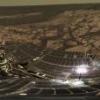Римският легион през I и II век
-
Последна активност
-
- 23 мнения
- 986 прегледa
-
Руско-украинската война 2022-2024 година. 1 2 3 4 190
От Р. Теодосиев, in Руско-украинската война 2022 година.
- 4733 мнения
- 363073 прегледa
-
- 17 мнения
- 1827 прегледa
-
- 0 мнения
- 29 прегледa
-
- 0 мнения
- 30 прегледa
-
-
Последно разглеждащи 0 Потребители
- No registered users viewing this page.





Препръчано мнение
Напиши мнение
Може да публикувате сега и да се регистрирате по-късно. Ако вече имате акаунт, влезте от ТУК , за да публикувате.